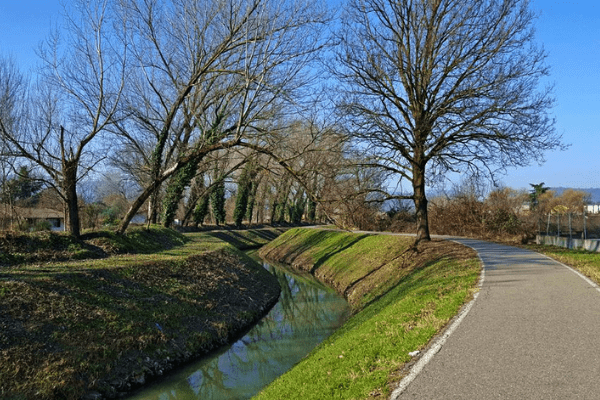There are 200,000 kilometers of canals along the length of the peninsula.
Resources that can potentially be revolutionary in enriching the territory, offering new and useful infrastructures perfect for commuters and cycle tourists.
This is one of the many data that made the agreement possible between FIAB (Italian Federation for the Environment and Bicycle), ANBI (National Association of Land Reclamation and Irrigation Agencies), CIREM – Interuniversity Centre for Economic Research and Mobility of the University of Cagliari and Polytechnic University of Turin – Department of Architecture and Design (DAD).
In the week of September 25th - October 3rd, right around the time of the National Land Reclamation and Irrigation Week, the same bodies presented a document that collects “the addresses for a national law on the recovery of waterways for cycling purposes”.
The potential network of cycle waterways must, by necessity, deal with difficulties, often bureaucratic and technical, which have so far prevented its adequate valorization.
We must also take into account the regulatory discrepancy, caused by the fact that there are various bodies responsible for watercourses, such as Regions, Land Reclamation Consortia, Basin Authorities and, for this very reason, FIAB, ANBI, CIREM and DAD have committed to turning the page and offering a development ground to politics.
To think about the heritage in question, we must first start from law no. 2/2018, which in fact provided for the recovery for cycling purposes, with a destination for public use, of the embankment roads of rivers, streams, lakes and canals, including land reclamation works, aqueducts, energy networks, sewer pipes, disused bridges and other road structures. We must start from here to structure a suitable national regulatory framework.
In the joint document, the signatories have collected some virtuous cases, to recognize and highlight the work done so far.
Among these, the Regional Law 31/2008 of the Lombardy Region "Consolidated text of regional laws on agriculture, forestry, fishing and rural development" and the Regional Law in Tuscany n. 41/2018 "Provisions on flood risk and protection of watercourses in implementation of Legislative Decree 23/02/2010" are cited.
Both laws point in the right direction for cycle-friendly waterways, a solution that today could make it easier for people to travel on their e-bikes, as well as using abandoned land in an eco-sustainable and bike-friendly way.
“It is therefore necessary – we read in the guidelines – have national guidelines that allow for the coordination of procedural interventions related to the construction of cycle paths, orienting them towards a concrete relationship of safeguarding the characteristics of these infrastructures. National legislation should therefore contain specific indications, including procedural ones, that indicate the cognitive processes of the asset and the relationships that must exist between the new necessary works and the architectural characteristics of the existing works".
SOURCE: FIAB (Italian Federation for the Environment and Bicycle)

